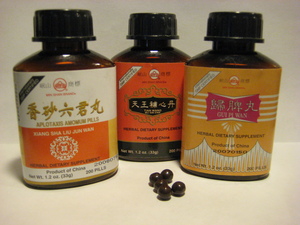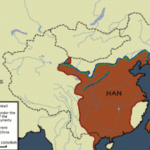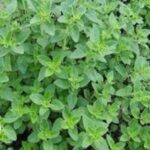History and Theory of Chinese Herbal Formulas
Many of the classic Chinese herbal formulas were developed thousands of years ago. One of the earliest manuscripts containing herbal formulas dates back to168 BC, during the period of the Han dynasty. The treatment strategy and medicinal herbs described in this ancient manuscript are very similar to those used in traditional Chinese medicine today.
Rather than diagnosing named diseases as in western allopathic medicine, traditional Chinese medicine identifies and resolves patterns of disharmony or imbalances in the body. Each diagnosis is specific to the characteristics of the individual patient.
In TCM, conditions are often described in terms of deficiencies or excesses in heat, cold, dampness or dryness, or disharmonies in Qi (vital energy) or blood. Qi deficiency might appear as fatigue or lethargy, while symptoms of blood deficiency include dizziness, paleness, insomnia and heart palpitations. All of these imbalances contribute to an overall state of disharmony, which can be brought back into balance by herbal formulas.
The Components of Chinese Herbal Formulas
Each medicinal herb included in a TCM formula plays a specific role, and the combination of herbs work together to bring about the desired healing effect. The roles of the ingredients in a formula are classified as follows:
Chief (also known as king, emperor, monarch, ruler or principle)- this is the most important medicinal herb in the formula. It is specifically directed against the primary problem.
Deputy or minister- assists the action of the chief herb, enhancing the therapeutic effect, or treats a secondary problem.
Assistant or Adjutant- may assist the chief and minister herbs to treat the primary problem, directly treat a secondary problem, or moderate the effects of the chief herb.
Conductant or Guide- these medicinal herbs have properties that direct the action of the formula to specific locations in the body. For example, if the formula is for a respiratory condition, conducting herbs that are specific for the lungs would be included in the formula.
How Chinese Herbal Formulas are Taken
Chinese formulas are administered in a variety of different ways. Some of the most common include:
- Medicinal tea- herbs are infused (steeped) in hot water
- Decoction- the ingredients are boiled in water. Decoctions differ from teas in that the ingredients are boiled for a period of time, whereas for a tea, boiling water is simply poured over the ingredients and allowed to steep. Decoctions are usually used for roots or barks and teas are used for leaves and flowers.
- Powders- the dried herbs are ground to a fine powder. The powder may be packaged in capsules.
- Extracts- a concentrated form of the herbs; may be liquid or dry.
- Tea pills- small, spherical pills, usually dark brown or black in color. They are convenient and easy to take, and don’t require any preparation.
- Tincture- the herbs are extracted using alcohol and the tincture is taken in small amounts or diluted in water or juice.Sources:
Volker Scheid, Dan Bensky, Andrew Ellis and Randall Barolet. Chinese Herbal Medicine Formulas and Strategies, 2nd. Edition, Eastland Press, 2009.
Him-che Yeung. Handbook of Chinese Herbal Formulas. Institute of Chinese Medicine, 1995.



